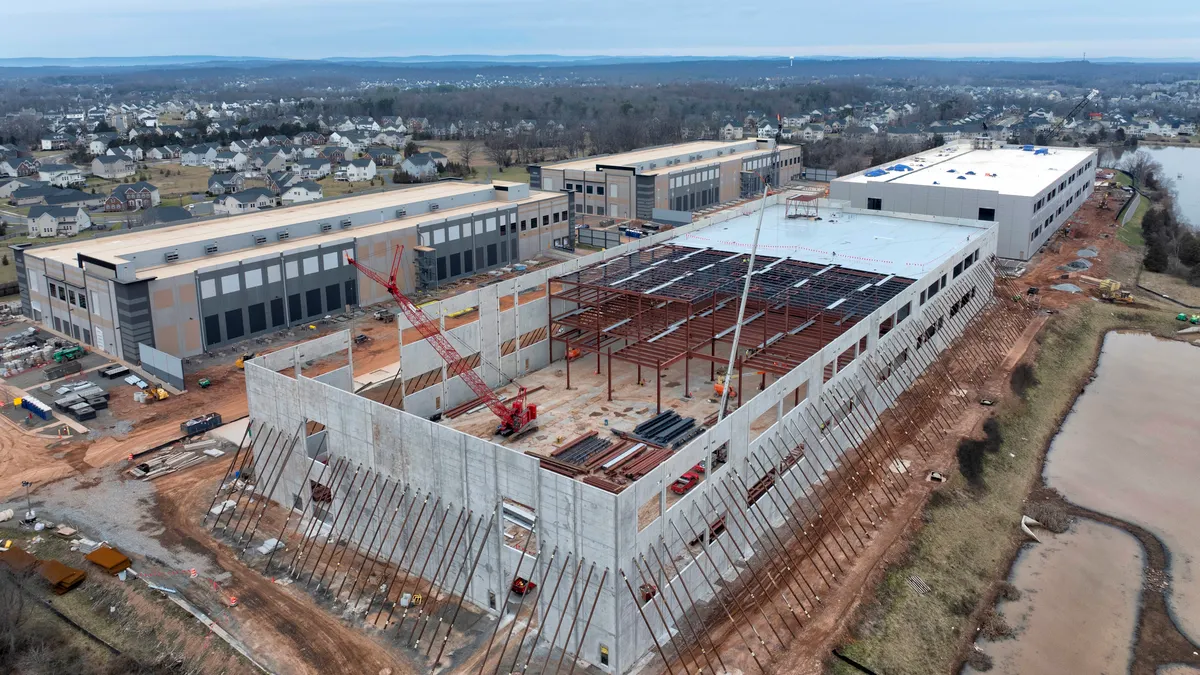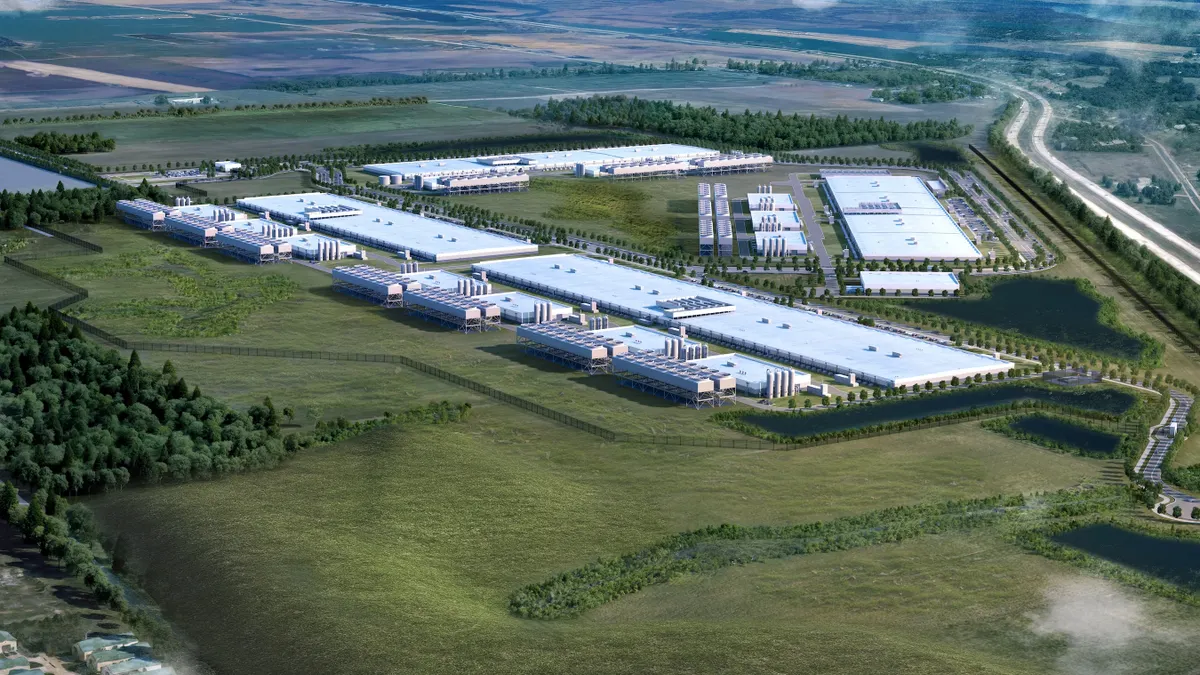While uncertainty weighed on construction businesses in the lead-up to the election, the results haven’t done much to relieve that burden — at least not yet. On Thursday, three industry economists shared their post-election outlooks on the design and construction economy in a webinar sponsored by construction information and technology company ConstructConnect.
“It’s a little too early to make predictions in terms of [the election’s] direct impacts on construction,” said Kermit Baker, chief economist at the American Institute of Architects. Still, the results have given industry observers a sense of what topics are on the horizon that will likely impact construction, among them trade policy, immigration, tax reform, infrastructure spending, deregulation and housing finance reform.
Construction Dive tuned into the event and, below, we’ve highlighted a few takeaways for businesses as they await more details from the incoming presidential administration — which campaigned on hardline promises of massive infrastructure spending, tax reform and deregulation — and where Congress might push back.
“You don’t know whether to take the proposals that are being offered literally — and I don’t think most people do take them literally — so you have to adjust them somewhat,” ConsructConnect Chief Economist Alex Carrick said. “It’s going to take a while for all this to sort out.”
Single-family continues to trail recovery
“Construction has not really come back as one would have expected, and particularly over the last six months or so, it seemed like construction has gone into hibernation,” Carrick said. After peaking in early 2006, dropping steeply during the recession and recovering since, construction activity has since hit a period of “ups and downs,” said Ken Simonson, chief economist for the Associated General Contractors of America.
The notoriously volatile multifamily category bounced back following the recession and has fully recovered, exceeding the last cyclical high, Baker said. The commercial and institutional sectors are nearing recovery, he added, while single-family construction struggles to catch up, having come off a much lower base at the market’s trough. October’s residential starts figures were a promising sign of continued recovery, posting their highest overall level since August 2007, with single-family climbing 10.7% in October and multifamily swinging back from a dismal September to rise 75% for the month.
Nonresidential construction spending is expected to grow by roughly 5% in 2016, and within that, commercial and industrial should increase by approximately 10% while institutional is expected to average less than half that, Baker said.
Infrastructure spending was perhaps the biggest touchstone for construction on the campaign trail, with President-elect Donald Trump proposing a $1 trillion infrastructure spend backed largely by private investment. “We’ve seen a lot more hype than details, so it’s hard to tell where the supposed $1 trillion of infrastructure spending would [come from],” Simonson said. Trump’s plan would require a 9% annual increase in spending, he said, but due to tight labor conditions, some categories would be more suited than others to take advantage of it.
A shift toward state-level tax increases, bond and ballot issues as well as growth in public-private partnerships will drive infrastructure spending, Simonson said. That jibes with the success of similar infrastructure spending measures on the state ballots this election.
First-time homebuyers trickle into the market
Demand among first-time homebuyers has increased dramatically while activity in the move-up market has been relatively flat, Carrick said. First-timers typically purchase previously owned properties, but through the recession, those owners weren’t trading up to larger homes in great enough numbers to meet the demand coming in, economists told Construction Dive last month. The category has seen an upward, if inconsistent trend this year, however, and posted a modest increase of 3.2% from August to September on the strength of a return in first-time buyers to the market. Still, first-time buyers are more than a few percentage points off their prerecession 40% share of home sales.
Airport construction takes off; retail takes new shape
Overall, nonresidential activity has been mixed. Manufacturing, a strong performer last year, was down in the first nine months of 2016, Simonson said, and is expected to shrink through 2017 on the tail end of the project completions cycle. “As the dollar strengthens, it is possible that more manufacturers will decide to locate plants here,” he added.
Airport construction is picking up, however, and is expected to grow through “another wave of renovation and adaptation” in the next few years, Simonson said, with much of that work focused on remodeling airport interiors to the meet the security requirements of post-9/11 air travel.
Investment in healthcare building activity, which has seen an influx of smaller-scale outpatient and ambulatory care centers, will largely depend on the future of the Affordable Care Act, as the incoming presidential administration has said it plans to repeal and replace the current version of the program.
Retail construction, meanwhile, is surprisingly strong even as chains like Wal-Mart, Macy’s, Kmart and Sears reduce their footprints considerably.
“There is a big lesson to be learned from retail,” Carrick said, with technology leading to rapid changes in the type of and demand for construction in that category. The construction of warehouses and urban "click-and-collect" centers is keeping pace with the rise of e-commerce, with the latter typology expected to lead the category in 2017. Retail as a part of mixed-used development, in lieu of standalone properties, is also expected to continue to increase in share.
Construction hubs to shift
The Central, Mountain and Southeast regions have long seen construction make up a large share of state economies there. However, increasing building costs in California, lower energy prices in Texas and an overall economic shift toward the technology and biomedical fields, Baker said, will likely cause the geographic centers of construction activity to shift.
Through this, logistics will drive construction, both in creating supply chain efficiencies for a range of industries and in how those industries respond to technological changes, Carrick said. “Almost everything is about moving something,” he said. “It’s about moving electricity, digital items, people. Nations that understand and adapt to this new dynamic will prosper best.”
The labor shortage isn't going anywhere
The issue that has dominated construction headlines this year is likely to get worse before it gets better, Baker said. While the industry’s activity and spending is nearing recovery, its labor force is not. The number of employed construction workers today is 1.6 million fewer than it was in 2007, he said, and there’s little potential for it to grow in the near-term as unemployment in the industry is already low, at just over 5%.
Meanwhile, contractors unsure of when they’ll be able to find labor suitable to each job are being more conservative about the scheduling they agree to, Baker said, causing project delays.
In many states showing employment growth, contractors still have trouble finding qualified workers, particularly in Colorado, California, Florida and Texas. “In some cases, this indicates local conditions of not having demand and in other cases contractors can’t make due with less-qualified workers,” Simonson said. AGC members are spending more money on training and overtime wages, he said, suggesting that many contractors are using less-qualified labor where they can and training them up on their own, or paying more experienced workers to put in longer hours.
Due to the shallow labor pool, construction companies needing to recruit new, younger workers into the trades while competing for more experienced workers are expected to continue to raise wages.



















